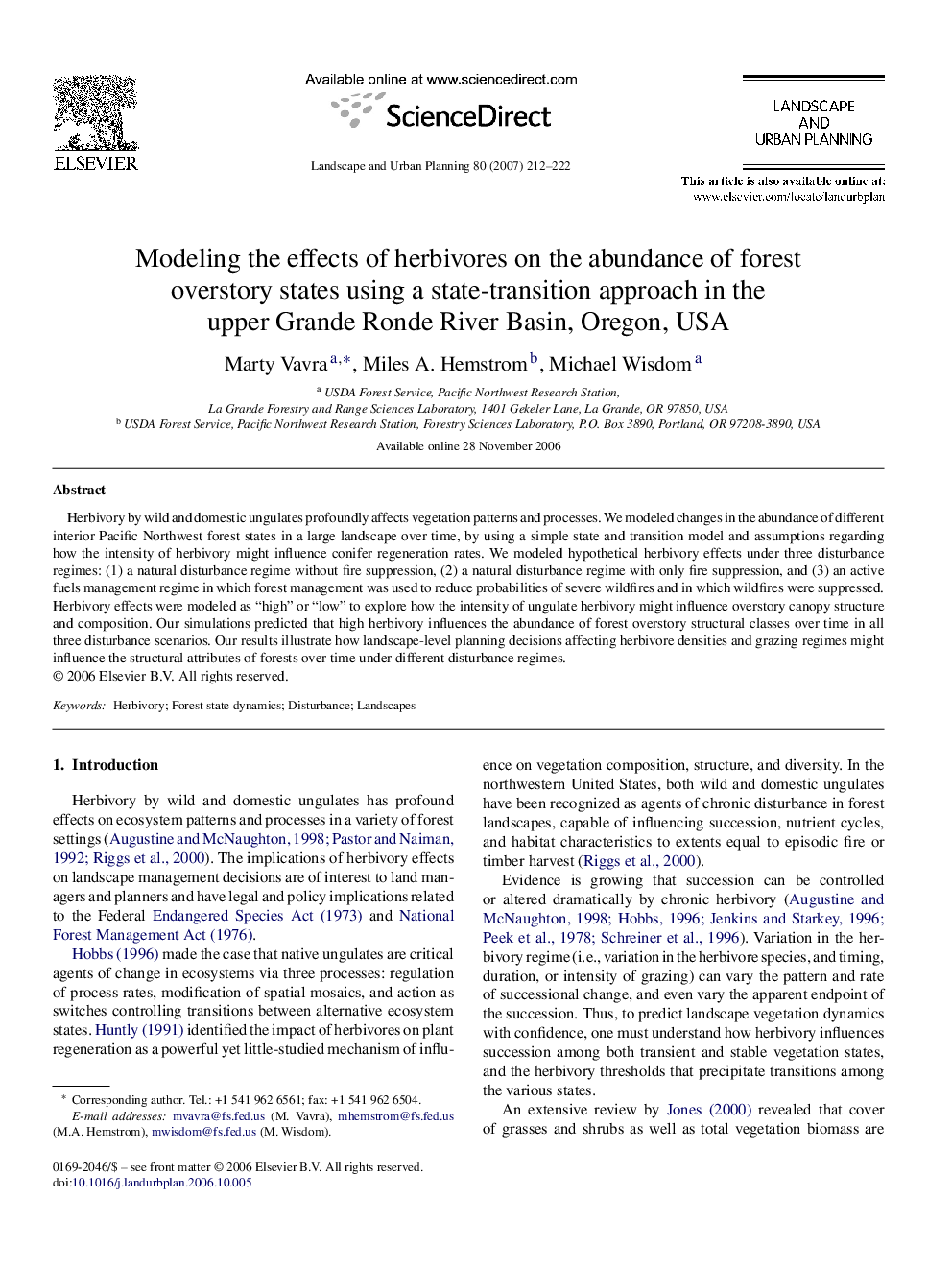| Article ID | Journal | Published Year | Pages | File Type |
|---|---|---|---|---|
| 1050469 | Landscape and Urban Planning | 2007 | 11 Pages |
Abstract
Herbivory by wild and domestic ungulates profoundly affects vegetation patterns and processes. We modeled changes in the abundance of different interior Pacific Northwest forest states in a large landscape over time, by using a simple state and transition model and assumptions regarding how the intensity of herbivory might influence conifer regeneration rates. We modeled hypothetical herbivory effects under three disturbance regimes: (1) a natural disturbance regime without fire suppression, (2) a natural disturbance regime with only fire suppression, and (3) an active fuels management regime in which forest management was used to reduce probabilities of severe wildfires and in which wildfires were suppressed. Herbivory effects were modeled as “high” or “low” to explore how the intensity of ungulate herbivory might influence overstory canopy structure and composition. Our simulations predicted that high herbivory influences the abundance of forest overstory structural classes over time in all three disturbance scenarios. Our results illustrate how landscape-level planning decisions affecting herbivore densities and grazing regimes might influence the structural attributes of forests over time under different disturbance regimes.
Keywords
Related Topics
Life Sciences
Agricultural and Biological Sciences
Ecology, Evolution, Behavior and Systematics
Authors
Marty Vavra, Miles A. Hemstrom, Michael Wisdom,
